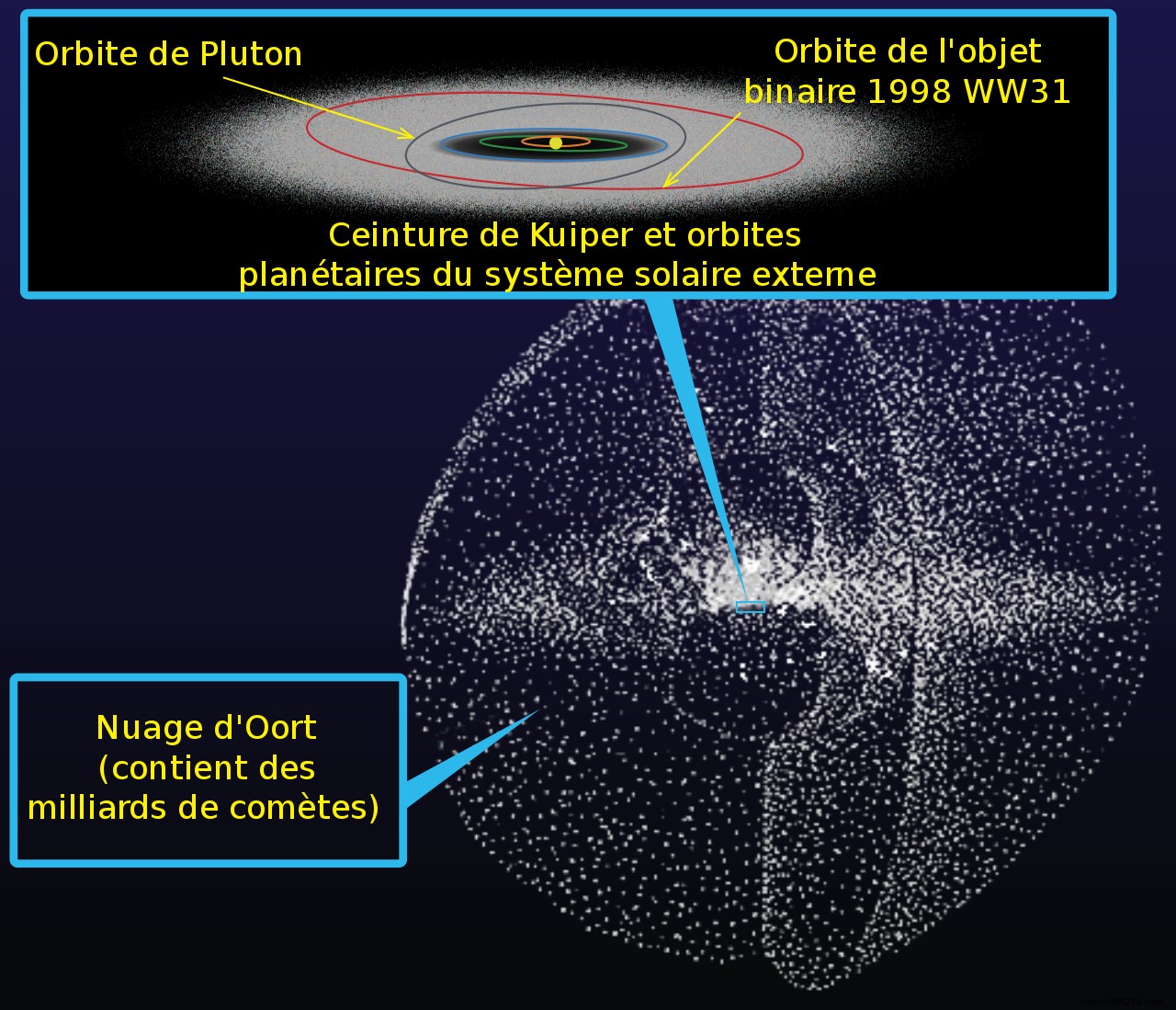Scientists have spent the past few years tracking a curious space rock called 2014 UN271, which many consider to be a massive comet. The object is currently approaching the Sun and is expected to reach the closest point of its incredible revolution in 2031.
2014 UN271 is a comet identified in Dark Energy Survey data captured between 2014 and 2018. Size estimates suggest it could measure between 100 and 370 km of diameter. If so, it would be one of the largest comets ever identified. The discovery is all the more exciting as the object comes to us from the confines of the Solar System.
There are indeed two types of comets. On the one hand, we have the so-called "short-period" comets (between 3 and 15 years). All revolve around the Sun in the Kuiper belt, a vast ring of small objects evolving beyond the orbit of Neptune, between 30 and 55 astronomical units from the Sun . Remember that a single astronomical unit is equivalent to the Earth-Sun distance, or just under 150 million kilometers.
Finally, we have the "long-period" comets that initially seemed to come out of "nowhere", sometimes traversing the inner Solar System before reaching deep space. The Dutch astronomer Jan Oort finally calculated one day that there must be a gigantic cloud of ice well beyond the Kuiper belt located between 5,000 and 100,000 astronomical units of the Sun where these objects must form. This belt is the "Oort Cloud". 2014 UN271 comes to us from cloud, still very enigmatic.

This formation of objects is very distant, so comets formed inside need hundreds of thousands or even millions of years to complete the journey of a orbit around the Sun. The object that interests us today completes a rotation of our star in 612,190 years . And luckily, we will be able to witness its closest passage to Earth during this incredible revolution.
Currently, 2014 UN271 is positioned just under twenty-two astronomical units (AU) from the Sun. This means that the comet is already closer than Neptune, located at 29.7 AU. It is estimated to reach the closest point of this huge round trip in 2031 , the year in which it will pass less than 10.9 AU from the Sun . At this point, it will have nearly reached Saturn's orbit.

In the meantime, researchers expect this 2014 UN271 develops the characteristic hair (or coma) and tail of comets approaching the heat of the Sun. This close pass will give astronomers an unprecedented look at this object born in a still very enigmatic part of our system.
After passing through Saturn, 2014 UN271 will return to the Oort cloud. And we will never see her again.